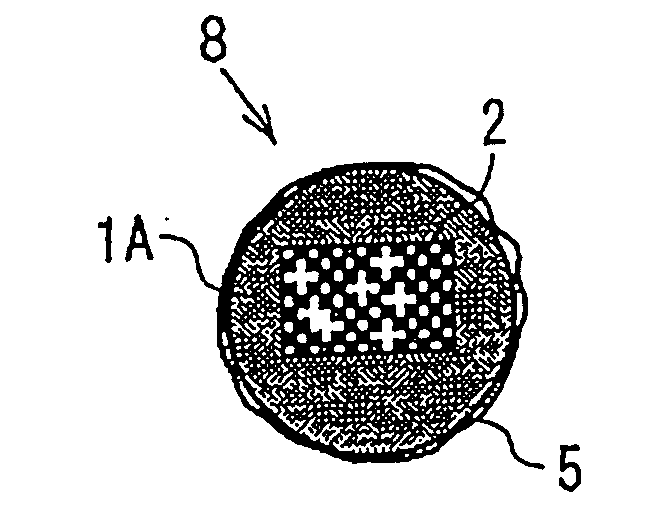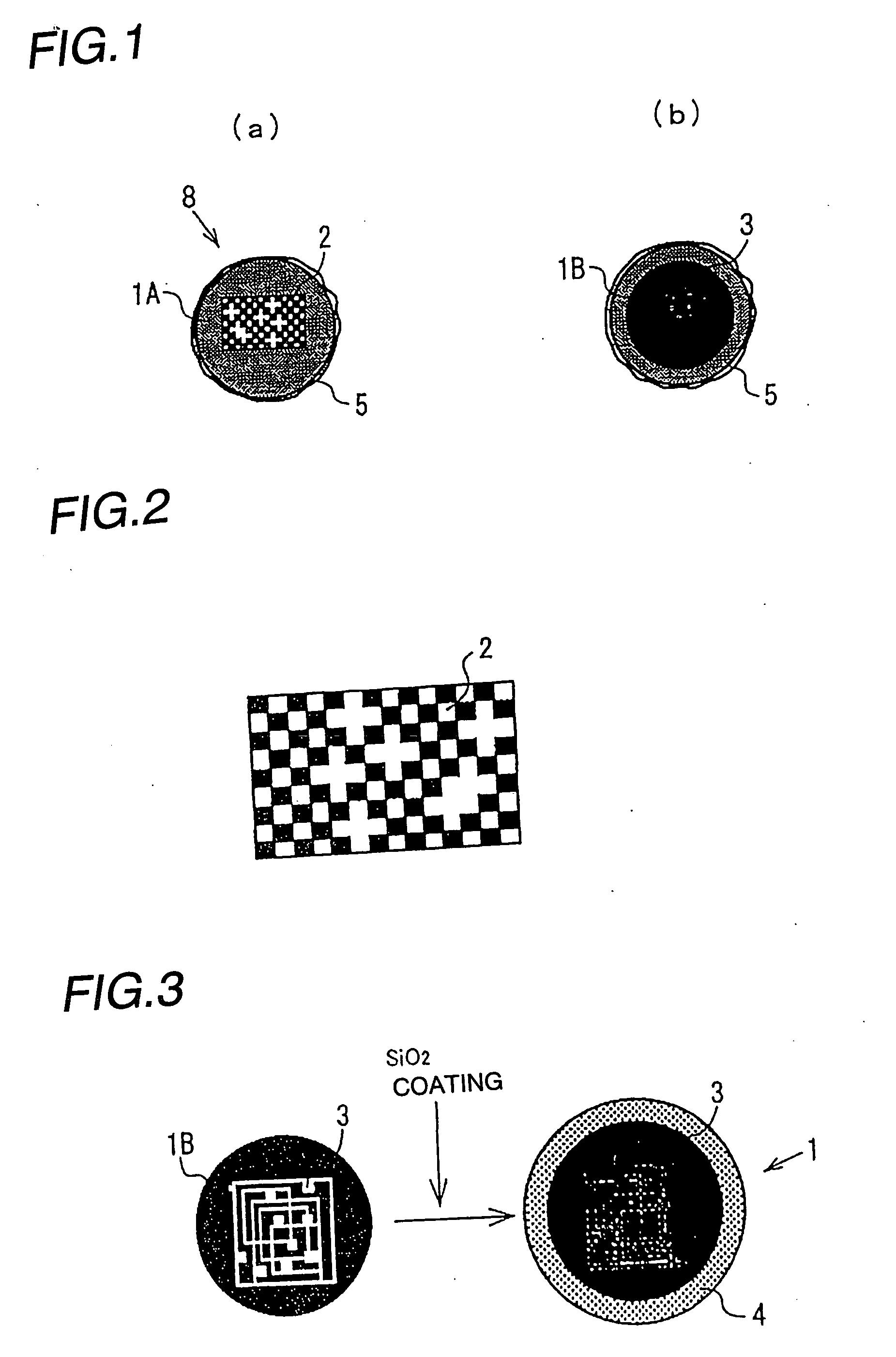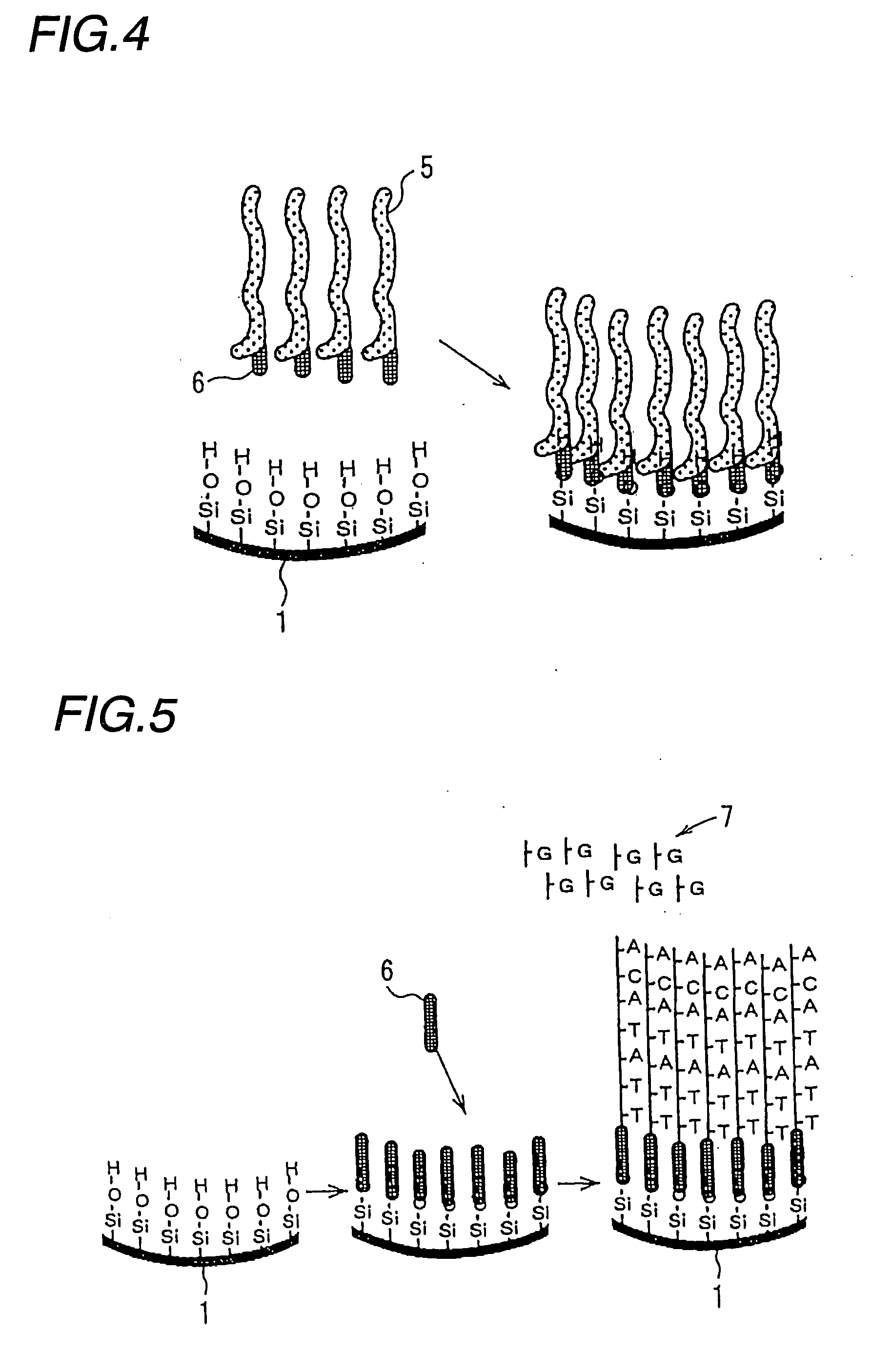Probe Beads for affirnity reaction and detection system
a technology of probe beads and amplification, applied in the field ofaffinity reaction probe beads, can solve the problems of high cost, lack of analytical means for giving, and high cost, and achieve the effect of stable deterioration or falling o
- Summary
- Abstract
- Description
- Claims
- Application Information
AI Technical Summary
Benefits of technology
Problems solved by technology
Method used
Image
Examples
example 2
IC tag identification marks composed of certain resonance circuits were formed on single crystal spheres of silicon having a diameter of 0.5 mm. These spheres were each coated with a silica membrane formed by hydrolysis of tetraethoxysilane. The resulting carriers were treated with epoxysilane, which was used as a linker to immobilize particular cDNA's on the carriers.
The thus produced affinity reaction probe beads were placed in a reaction cell of polypropylene, and a sample containing fluorescence-labeled cDNA as an object to be detected was poured into the reaction cell, thereby performing the reaction. After completion of the reaction, the system was washed, and the reaction probe beads were withdrawn from the cell. The reacted probe beads were analyzed, one by one, by a fluorescence detector and, at the same time, individually identified based on resonance frequencies.
example 3
An individual identification information circuit comprising a certain antenna circuit and an 8-bit writable ROM was formed on each of single crystal spheres of silicon having a diameter of 1 mm. After a protective film was formed on the surface of the spherical silicon, the system was treated with a cuprammonium rayon solution, and also treated with hydrochloric acid to form carriers having a regenerated cellulose layer on the surface. Particular antibodies were adsorbed to and carried on the carriers to prepare affinity reaction probe beads.
The thus produced affinity reaction probe beads were placed in a reaction cell of polypropylene, and a sample containing fluorescence-labeled protein as an object to be detected was poured into the reaction cell, thereby performing the reaction. After completion of the reaction, the system was washed, and the reaction probe beads were withdrawn from the cell. The reacted probe beads were analyzed, one by one, by a fluorescence detector and, a...
PUM
| Property | Measurement | Unit |
|---|---|---|
| affinity | aaaaa | aaaaa |
| affinity reaction probe bead detection | aaaaa | aaaaa |
| Affinity detection | aaaaa | aaaaa |
Abstract
Description
Claims
Application Information
 Login to View More
Login to View More - R&D
- Intellectual Property
- Life Sciences
- Materials
- Tech Scout
- Unparalleled Data Quality
- Higher Quality Content
- 60% Fewer Hallucinations
Browse by: Latest US Patents, China's latest patents, Technical Efficacy Thesaurus, Application Domain, Technology Topic, Popular Technical Reports.
© 2025 PatSnap. All rights reserved.Legal|Privacy policy|Modern Slavery Act Transparency Statement|Sitemap|About US| Contact US: help@patsnap.com



